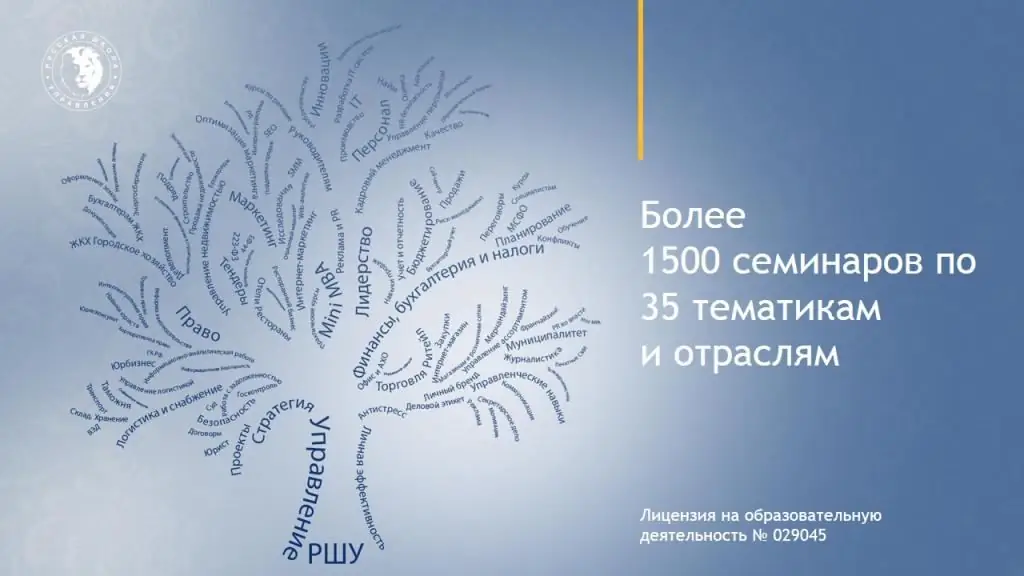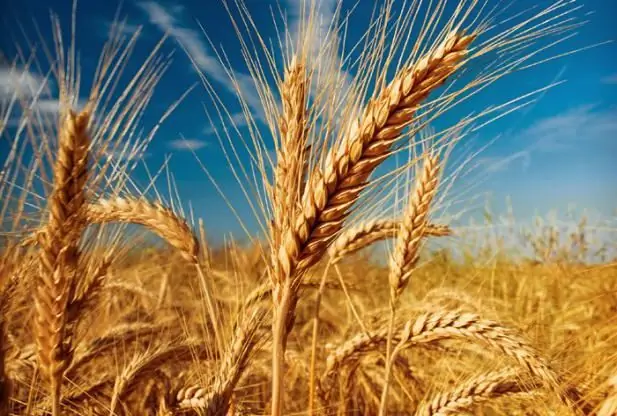2025 Author: Howard Calhoun | [email protected]. Last modified: 2025-01-24 13:10:31
More than two-thirds of the products consumed by the population of the planet are provided by the leading branch of agriculture - crop production. This is the fundamental basis of world agricultural production.

Let's consider its structure and talk about the achievements and development prospects of this world economy.
Crop industries
The flora is diverse, so this industry covers many areas. The main ones are production:
• grains;
• potatoes and tubers;
• industrial crops;
• vegetables and melons;
• fruit and grapes;
• feed.
Let's consider the features of each of these areas.
Grain production
Cultivation of cereals occupies a major share of world agricultural production. The world's crop production is unimaginable without this main segment.

Crops of grain on average occupy more than half of the world's arable land, and inin some countries, almost all cultivated areas. It is these crops that form the basis of the nutrition of the population of each country, as well as a significant share of the feed ration in animal husbandry.
Grain also acts as a raw material for many industries. World grain production has reached 2 billion tons per year, and 1.6 billion tons of the total is occupied by wheat, rice and corn. Let's talk about the main cultures of this group.
Wheat
Wheat is the world leader in grain production. A native of the Arabian steppes, she has been known for six thousand years, and in the modern world has become the unshakable basis of such an industry as crop production. This cannot be overestimated. Thanks to the efforts of breeders, zoned wheat varieties are grown all over the world today. Huge areas devoted to arable land are located in the Northern Hemisphere, slightly smaller in size - in the Southern Hemisphere. The universally recognized world regions for growing wheat are the American plains, connected in the north with the Canadian steppes, the arable lands of Argentina, Russia, China and many other states and continents. The largest suppliers of wheat today are the USA, Australia, Canada.
Rice
In second place in terms of crops is rice, which is the main product of a huge part of the earth's population, mainly from Asian countries.

Rice is an excellent basis for obtaining flour, starch, alcohol, waste from these industries supplements the livestock feed ration. Historians claim that people began to grow rice in the central and southernregions of China in the first millennium BC. e. The cultivation of this crop is a special crop production technology, and perhaps it is only in a hot and humid climate. That is why the main areas of intensive rice cultivation are concentrated in the states of the south and southeast of Asia, which provide up to 90% of the world harvest. China is the undisputed leader in rice production. Thailand, India, Indonesia, Brazil, Japan are major producers.
Corn
Use of corn is very diverse. In the livestock industry of the United States and Western European countries, it is used as the main fodder crop. In Africa, Asia, Latin America and southern European countries, it is a food crop. Corn is a plant of Mexican origin, from where it has spread throughout the world. Its cultivation is concentrated today in areas with a comfortable warm, temperate or subtropical climate. The main areas of corn production are the American crops, dispersed south of the Great Lakes. It is exported to the USA, Canada, Brazil, Argentina and Australia.
Tube and potato growing
The most widespread tuber crop is the potato, a native of South American lands, cultivated today in all temperate zones. The leaders in potato production are Russia, USA, Poland, China, India.

An important role is played by sugar beet and cane cultivated in the states of the tropical and subtropical belts, such as China and Cuba. For somedeveloping countries (Dominican Republic), such crop production is the basis of state policy. Developed countries produce no more than a tenth of the world's sugar cane.
Sugar beet production is different. The region of its cultivation is temperate latitudes: the middle zone of Europe (the states of the European Union and Ukraine, as well as the USA and Canada). Asian manufacturers - Turkey, China, Iran.
Oilseeds
Currently, vegetable oils made from oil plants account for two-thirds of the world's total fat intake. Oilseeds include peanuts, sesame, rapeseed, sunflower and many others. The intensive growth in the production and consumption of products from these plants is currently associated with the replacement of animal fats with vegetable fats in the diet in economically developed countries and the relative availability of these products in developing countries.
The leading positions in the production of soy products are occupied by the United States, the collection of peanuts - India, the collection of cotton and rapeseed seeds - China.

Developing countries, growing an impressive part of the crops of this industry, are now significantly reducing oilseed exports due to the creation and rapid development of their own oil and fat industry. And they no longer sell raw materials, but manufactured products of their own production.
Cultures that have tonic properties and are valued precisely for them (tea, coffee, cocoa) grow in very limited areas - in tropical and subtropical zones. Their cultivationconcentrated in the southern countries of the Asian continent, where the tropical climate makes it possible to develop crop production. These are Malaysia, India, etc.
Vegetable growing
Along with cereals, fruit and vegetable crops dominate the economy of many states. The impressive size of the land occupied by their cultivation practically competes with grain crops. With the growing global trend in the consumption of vegetables and fruits, their production and imports are growing today.
The established trend of entering the world market a significant share of oilseeds, sugar-containing, fruit and tonic crops from developing countries remains unchanged.
Non-food crop production
From non-food crops, fibrous crops and rubber play a significant role. The main fiber-containing plant is cotton, the recognized leadership in the production of which is shared by the countries of Asia, a slightly smaller volume - by the states of the American and African continents.

Other equally valuable fibrous crops - flax and jute - occupy much smaller areas. More than three-quarters of the world's flax production is in Russia and Belarus; jute is grown in Bangladesh. The traditional producers of natural rubber are the countries of the southeast of the Asian continent (Indonesia, Thailand). The developing Asian states are characterized by the cultivation of crops containing alkaloids - tobacco, opium poppy, Indian hemp. These are the prevailingcurrently the world's crop production and sales.
Features of crop production in Russia
Despite the fact that Russia is a country with a very harsh, mostly temperate climate, its agricultural industries have never lagged behind the world leaders in the production of sugar beets, potatoes, vegetables, grains and oilseeds.
Agricultural production covers almost all branches of crop production, with the exception of the cultivation of exotic plants such as cocoa, coffee, rubber plants.

Domestic croplands are concentrated in temperate continental latitudes - in the Central regions of the Volga region, in the Urals and Western Siberia, as well as in the southern regions of the Caucasus. The technology of crop production in Russia is very extensive and covers the production of both food and industrial and fodder crops. Moreover, almost all croplands of all climatic zones covering the country are involved in this process.
Growing cereals in Russia
Like the world's crop production, this industry in Russia is unthinkable without the production of grain, the main share of which is wheat. Vast areas of arable land, favorable climatic conditions, territorially adapted varieties and growing traditions have made wheat not only the basis for obtaining flour, cereals and subsequent processing in the baking industry, but also the dominant economic component of domestic agriculture. Today Russia is in the world top threewheat suppliers. The natural conditions of Russia allow growing both winter and spring wheat. The yield of winter crops significantly exceeds the crops of spring crops, but this is due to the conditions and geography of growth. Since winter varieties are more vulnerable and thermophilic, they are usually grown in the western regions of the country, where the climate is milder.

Important and inferior to wheat in terms of production, however, quite a bit, the crop is barley. It occupies almost a quarter of the total grain crop. Being a raw material for the beer industry and an excellent fodder base, barley also has a number of advantages - it is surprisingly frost-resistant, has a short growing season, which allows it to be harvested almost without loss.
Grain production in Russia is not limited to the cultivation of wheat and barley, since crop production is an industry (this is also confirmed by state support programs), covering many areas. Cultivated rye, oats, corn, buckwheat and rice are significantly inferior in terms of crops to wheat, but nevertheless, the sown area and, consequently, the yields of these crops are gradually increasing.
Growing root crops and industrial crops in Russia
But domestic crop production is not only grain crops. Impressive areas are occupied by planting potatoes, which are traditionally part of our diet. But it should be noted that the industrial cultivation of potatoes is still small, since Russians get the largest crops on household plots.
Another technically valuable,a multi-purpose crop grown mainly in the Central Black Earth region is sugar beet. It is cultivated for sugar production, and waste and processed products serve as an excellent supplement in livestock farms.

It is impossible not to mention the sunflower, whose seeds are the raw material for almost all vegetable oil produced and consumed in Russia. Important, but not very relevant, due to the country's natural features, directions - gourds. Beets, cabbage, onions, tomatoes, carrots, etc. are traditionally grown. In the Orenburg region and the lower reaches of the Volga, gourds such as watermelons and melons are successfully grown. Crop production is not just a solution to the food problem, but also to ensure the country's security, which is confirmed by the practice of state support for agricultural producers.
Recommended:
Russian School of Management: student reviews, areas of training and advanced training, branches

Russian School of Management is a modern, world-class advanced training center. The main difference can be called a unique teaching staff. How RSU teachers differ and what clients say about the training center will be discussed in this article
Nuclear industry of Russia: areas of activity, main directions and tasks

The history of the nuclear industry begins with the launch of the world's first power plant in the city of Obninsk in 1954, powered by uranium isotopes
What are the areas of activity for private entrepreneurs

When an entrepreneur registers a company, he must indicate what kind of business he plans to do. At the same time, all areas of activity must necessarily be of a very specific nature, and even a new and creative idea for a business must be adjusted to the criteria established by law
Branches of Sberbank in Orel: a complete list of branches, opening hours, addresses and reviews

PJSC "Sberbank" in Orel is represented by more than 20 branches of the company with the ability to serve individuals and legal entities. Bank customers can make transactions in offices from 08:30 to 19:00. VIP level service is provided for status clients in a specialized branch on Komsomolskaya street
FSS: confirmation of the type of activity. When and how to confirm the main activity in the FSS

According to the updated legislation, all business entities must confirm the main type of economic activity (OVED). In 2017, this procedure has undergone some changes. What did they touch: documents, deadlines or responsibility? Let's try to figure it out

